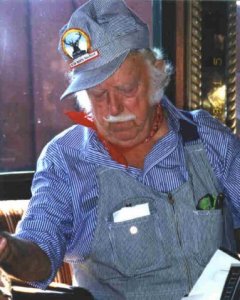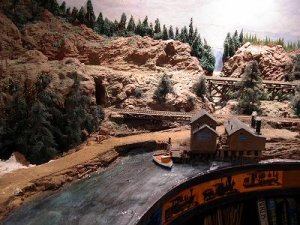Hey TC, how do you make/mix/prepare (?) paper mache? What is it exactly?
Since my native language is German, the same expression must speciify different materials in our two languages.
For me, paper mache (exact spelling
here: "papier-maché" - a French word!) is made by mixing small paper scraps, maximum size 1x2", with a soupy wallpaper paste. The whole thing is mixed and kneaded until you get a soggy pulp. As kids we used to model puppet heads out of this stuff, and on my very first scenicking project (that was on a slot car race track) I used the stuff to model rock and concrete walls. Anyway, it looks definitely different than your paper mache.

BTW, your series of photographs is a beautiful tutorial - I'd call it a hot candidate for the academy! :thumb:
Ron














































